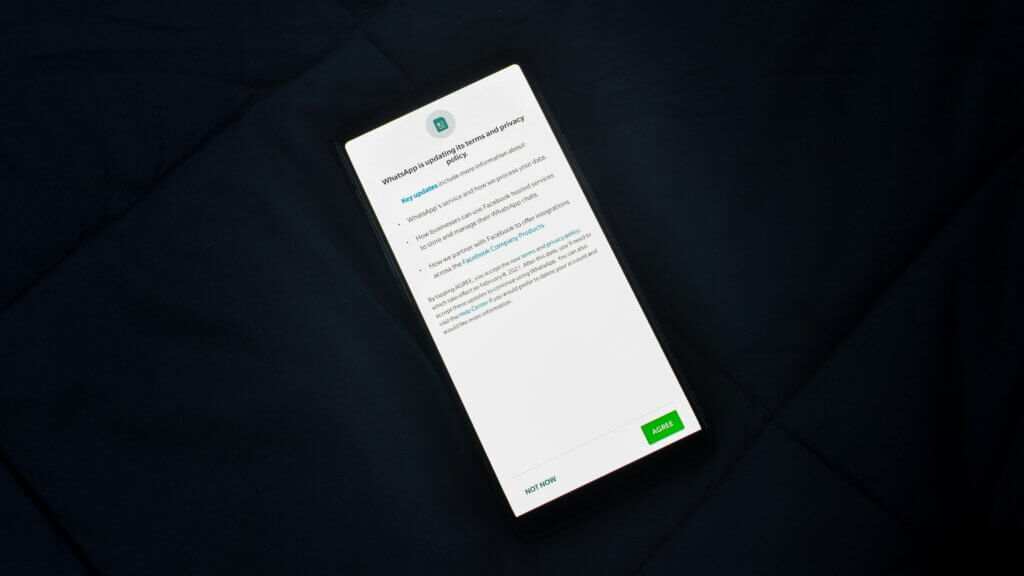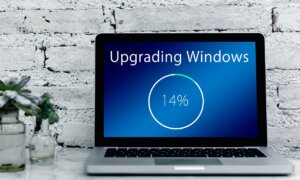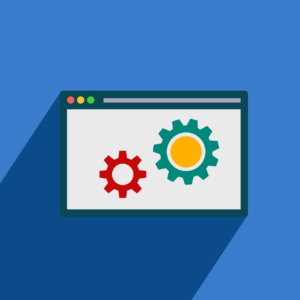After reading this article, you’ll:
- Recognize the critical importance of ongoing mobile app maintenance and regular updates for ensuring app security, performance, and user satisfaction.
- Understand the risks associated with neglecting app updates, including frustrated users, security vulnerabilities, and loss of competitive edge.
- Learn the key components of a comprehensive app maintenance plan, including proactive monitoring, scheduled updates, security audits, performance optimization, scalability planning, and rigorous quality assurance testing.

Mobile apps have become an integral part of our daily lives. As of 2023, over 257 billion apps were downloaded globally across app stores. With this rapid pace of mobile app adoption, user expectations are also evolving. Studies show that users expect apps to be reliable, quick, and secure.
Regular updates and diligent maintenance are critical to meeting these user expectations and ensuring the ongoing success of a mobile app. Apps that receive consistent updates tend to have much higher user retention and engagement. One report found that apps updated on a regular basis saw a 4x increase in user retention compared to apps updated infrequently. Updates allow developers to fix bugs, improve performance, enhance security, and add exciting new features—all vital components to keeping users happy.
On the other hand, neglecting app maintenance can frustrate users, open dangerous security vulnerabilities, and cause apps to quickly fall behind competitor offerings. This highlights why having a comprehensive maintenance plan is so important for any mobile app post-launch. From regular security audits to scalability planning to quality assurance testing, maintenance encompasses the behind-the-scenes work required to keep an app functioning optimally. Investing in ongoing app maintenance pays dividends through improved user satisfaction, increased retention, and reduced security risks.
The Lifespan of a Mobile App
The launch of a mobile app marks the transition from initial development to ongoing maintenance. Too often, the hard work of building an app leads teams to neglect the critical work required post-launch. However, an app’s lifespan extends far beyond its release date.
Whereas launch day represents a major milestone, the real work has only just begun. App stores like the Apple App Store and Google Play Store frequently refresh their platform guidelines and policies. Developers must continually monitor these changes and update their apps accordingly. Keeping pace with these evolving requirements takes consistent effort.
 Additionally, the technical landscape transforms quickly. New phone models are released annually with different screen sizes, resolutions, chips, and features. Operating systems receive regular updates as well—iOS 17 and Android 14 being the latest. As a result, apps demand ongoing maintenance to adapt to new technologies and remain compatible.
Additionally, the technical landscape transforms quickly. New phone models are released annually with different screen sizes, resolutions, chips, and features. Operating systems receive regular updates as well—iOS 17 and Android 14 being the latest. As a result, apps demand ongoing maintenance to adapt to new technologies and remain compatible.
In summary, mobile apps have a never-ending lifespan to the extent developers continue investing in maintenance. Whereas launch day symbolizes the pinnacle achievement, consistent post-launch support determines whether an app continues delighting users or suffers deterioration. Maintaining an app is akin to nurturing a garden—requiring delicate care daily, not just at planting.
Benefits of Regular Updates
Regular app updates provide critical security protections and performance improvements.
Enhanced Security
On the security front, continuous updates enable developers to stay one step ahead of emerging threats. Mobile apps collect highly sensitive user data – from emails and locations to health stats and purchasing details. Without vigilant maintenance, this personal information remains vulnerable to theft. Regular updates allow developers to patch vulnerabilities as they are discovered, hardening app defenses. Updates also ensure compliance with evolving regulations around data privacy and security, such as GDPR and CCPA. Neglecting updates can expose apps to hefty non-compliance fines.
Improved Performance
Additionally, updates squash pesky bugs that disrupt the user experience. For example, an update might fix crash errors, allowing the app to run more smoothly. Updates also optimize operational efficiency from the backend—improving load times, data transfers, and power consumption. By refine-tuning performance, updates give users faster response times and extended battery life. Altogether, continuous updates keep apps running stably and efficiently.
New Features and Improvements
Beyond fixes and optimizations, updates also introduce helpful new capabilities. Regular improvements keep users engaged over the long term while compatibility updates retain access to the latest innovations.
Introducing fresh features on a regular basis keeps users interested and drives ongoing engagement. For example, a fitness app might add new workout routines, or a messaging app could incorporate fun AR filters. Responding to direct user feedback through updates also fosters goodwill. If users request a new organizing feature, building this into the next release makes them feel valued.
Compatibility with New Technologies
 Meanwhile, compatibility updates ensure apps continue functioning on the latest devices and operating systems. Mobile OSes like iOS and Android release new versions annually with security protections, speed boosts, and feature additions. Keeping the app up-to-date with these OS changes ensures it still performs properly. Additionally, new iPhones and Android devices launch every year with improved chipsets, expanded storage, 5G connectivity, and more. Updating apps to leverage these hardware advancements grants users faster speeds and richer capabilities.
Meanwhile, compatibility updates ensure apps continue functioning on the latest devices and operating systems. Mobile OSes like iOS and Android release new versions annually with security protections, speed boosts, and feature additions. Keeping the app up-to-date with these OS changes ensures it still performs properly. Additionally, new iPhones and Android devices launch every year with improved chipsets, expanded storage, 5G connectivity, and more. Updating apps to leverage these hardware advancements grants users faster speeds and richer capabilities.
Through both new features and forward-compatibility, updates make apps more engaging for users over time while preventing them from falling behind technological progress.
Risks of Neglecting Updates
While continuous updates demand developer resources, neglecting this app maintenance poses serious risks. Outdated apps quickly frustrate users, expose data vulnerabilities, and cause apps to fall behind the competition.
Buggy and broken apps infuriate users, harming retention and reviews. Without updates, bugs accumulate and crash errors surge. Key features may even cease functioning properly. These disruptions irritate users who expect a smooth, reliable experience. Consequently, neglected apps suffer declining usage as users switch to stable alternatives. Negative reviews further deter new users.
Secondly, unpatched security flaws leave user data dangerously exposed. Hackers constantly probe apps for vulnerabilities to exploit. And new hacking techniques emerge rapidly. Without installing security patches, apps remain susceptible to attacks, putting all collected user data in jeopardy. High-profile breaches erode user trust and spark damaging PR crises.
The competition never sleeps. Rival apps continue adding features and enhancing performance through diligent updates. Neglected apps quickly appear dated by comparison, chasing away fickle users. Stagnant apps fail to respond to user feedback or leverage new OS capabilities as well. By foregoing updates, developers cede their competitive edge.
While updating requires resources, it proves essential to delighting users, securing data, and matching innovating rivals. Skipping updates courts disaster through disillusioned users, breaches, and lost competitive positioning.
What a Comprehensive Maintenance Plan Includes
Keeping apps updated requires carefully planning maintenance activities long-term. Comprehensive plans incorporate continuous monitoring, scheduled improvements, and proactive security practices.
Proactive Monitoring
Closely tracking app analytics provides early warning signs of brewing issues. Monitoring key metrics like crash rates, load times, and user sessions reveals deteriorating performance. Analyzing user reviews and feedback also highlights pain points demanding attention. Establishing internal performance benchmarks further aids in assessing if updates successfully boost metrics.
Regular Updates
All apps need a structured update schedule—spanning quick fixes to major version releases. Prioritizing bug fixes and security patches for immediate turnaround preserves a smooth user experience. Scheduling feature additions and design refreshes on a quarterly basis keeps engagement high. Coordinating marketing plans with significant version release targets and change logs also assists user adoption.
Security Audits
Just as medical check-ups safeguard human health, recurring security audits protect app integrity. Audits identify vulnerabilities in network configurations, data flows, encryption standards, and other pillars. Addressing exposed weaknesses fortifies apps against continuously evolving hacking threats.
Performance Optimization
Optimizing performance represents a key app maintenance priority. Updates should target speed boosts, battery drain reductions, and resource usage efficiencies. Fixing sluggish load times and laggy interactions retains more frustrated users. Enhancements to data caching, image compression, and UI rendering can accelerate speeds. Reducing background processing and GPS pings will preserve battery life. Code profiling helps trim unnecessary resource utilization as well.
Scalability Planning
Effective maintenance also demands proactive scalability planning. Adding server capacity lets apps smoothly absorb spikes in traffic and new users. Database optimizations prepare for expanding data storage needs. Code decoupling facilitates expanding features down the road. Architecting modular microservices better equips apps for growth too.
Testing and Quality Assurance
Comprehensive QA testing must validate updates before deployment. Rigorous user interface testing checks new features function properly. Load testing confirms improved performance under peak demand. Security scanning identifies new vulnerabilities. Regression testing verifies that updates do not reopen old issues. Prioritizing testing reduces disruptive bugs and downtime.
By focusing on these core issues, developers can evolve apps to satisfy growing user bases over time.
Frequently Asked Questions on Mobile App Updates and Maintenance
Why are regular updates important for mobile apps?
Regular updates are crucial for mobile apps because they enhance security, improve performance, fix bugs, add new features, and ensure compatibility with the latest devices and operating systems. Apps that receive consistent updates see higher user retention and engagement, with one report showing a 4x increase in user retention compared to infrequently updated apps.
What risks do app developers face if they neglect updates?
Neglecting updates can lead to several risks:
- Frustrated users due to buggy and broken features
- Increased security vulnerabilities, potentially exposing user data
- Loss of competitive edge as rival apps continue to improve
- Negative reviews and declining usage as users switch to more stable alternatives
- Potential non-compliance with evolving data privacy regulations
What are the key components of a comprehensive app maintenance plan?
A comprehensive app maintenance plan includes:
- Proactive monitoring of app analytics and user feedback
- Regular scheduled updates (both quick fixes and major releases)
- Security audits to identify and address vulnerabilities
- Performance optimization to improve speed and efficiency
- Scalability planning for future growth
- Rigorous testing and quality assurance before deploying updates
How often should mobile apps be updated?
While the article doesn’t specify an exact frequency, it suggests a structured update schedule that includes:
- Immediate turnaround for bug fixes and security patches
- Quarterly scheduling for feature additions and design refreshes
- Regular monitoring and response to user feedback and analytics
- The key is to maintain a consistent update schedule that addresses both urgent issues and long-term improvements.
How do updates impact an app’s lifespan?
Updates significantly extend an app’s lifespan by:
- Keeping the app compatible with new devices and operating system versions
- Adapting to evolving app store guidelines and policies
- Maintaining user interest through new features and improvements
- Ensuring the app remains secure and performs well over time





